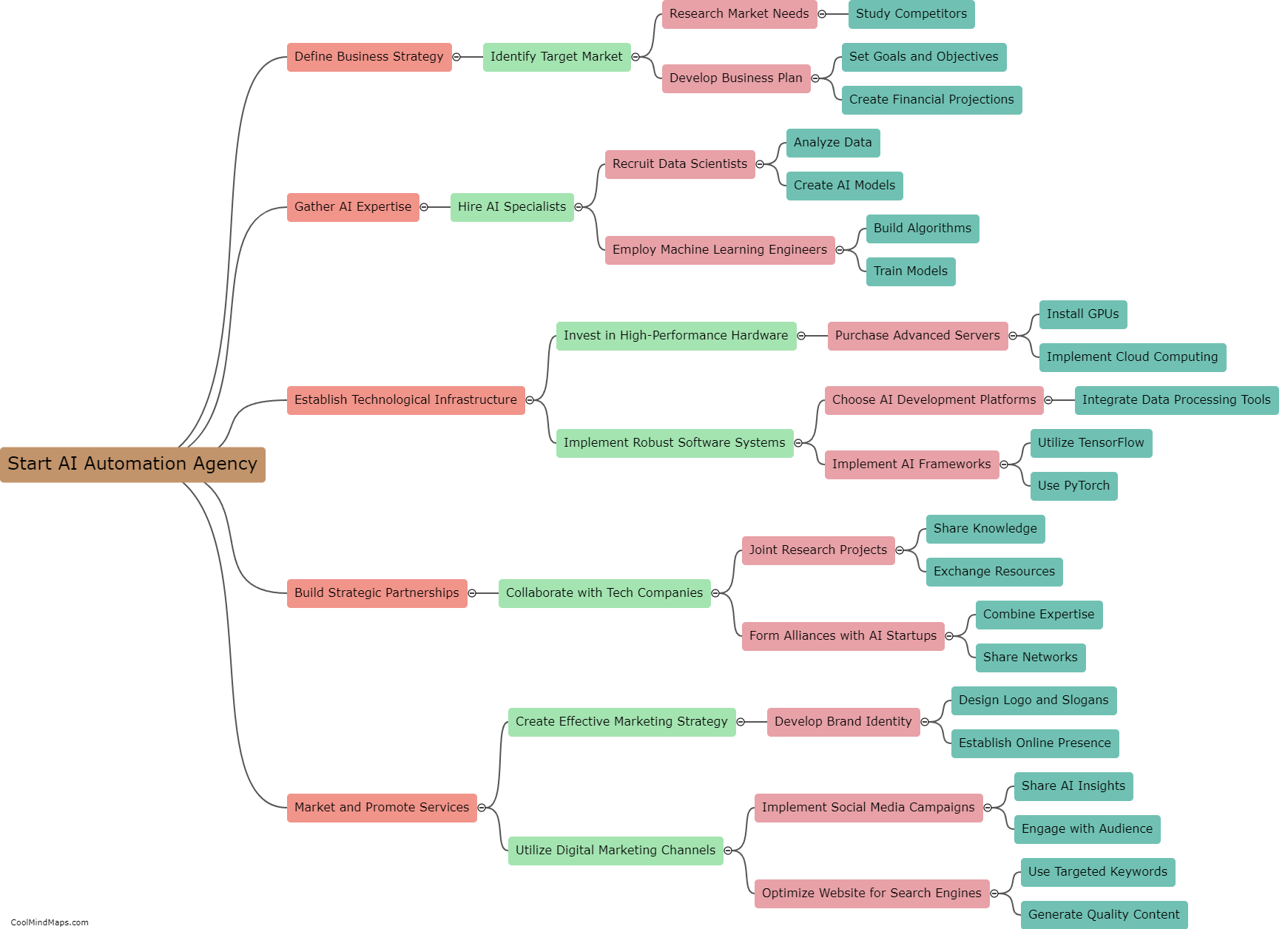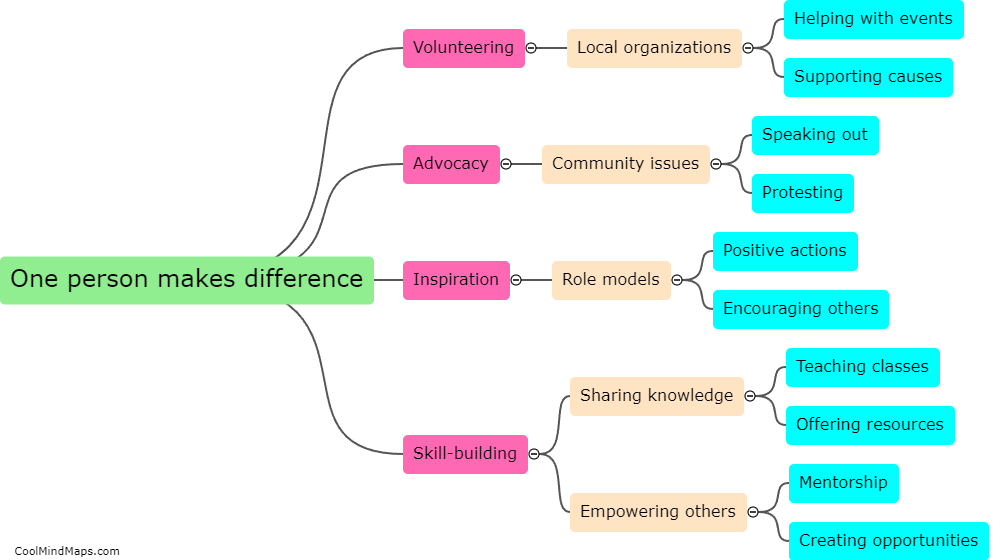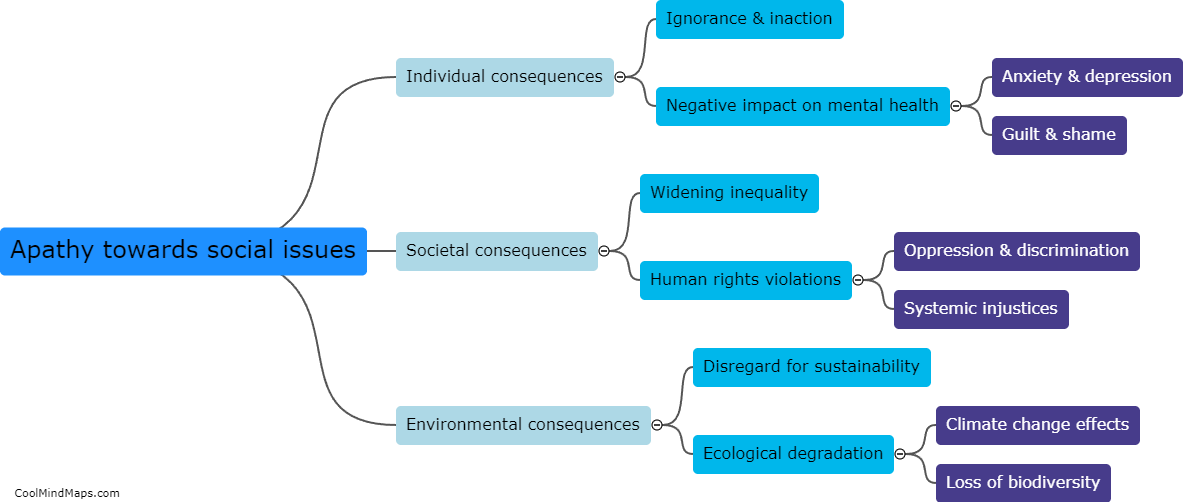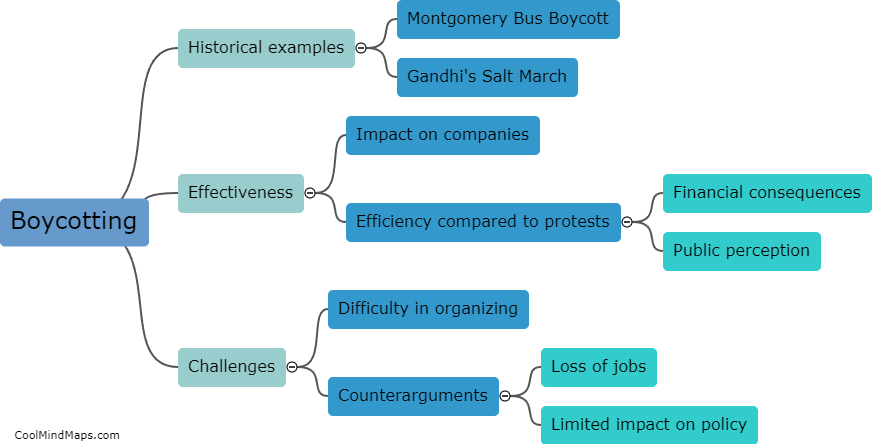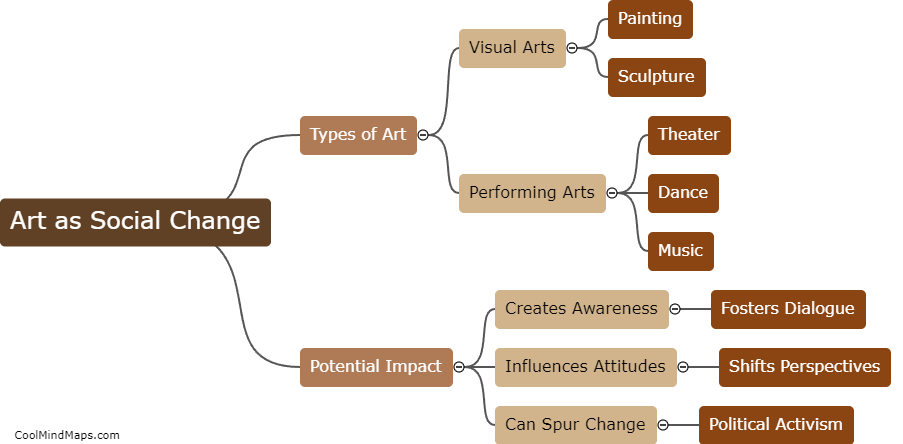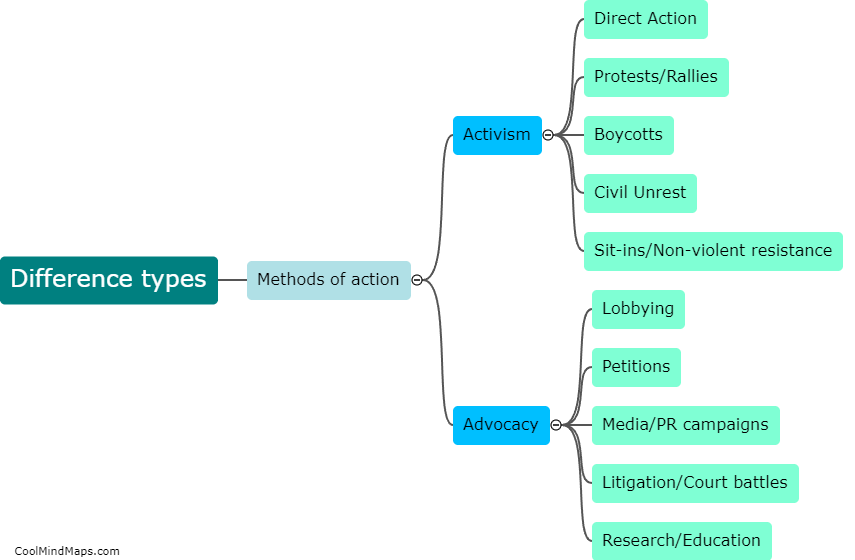How do different cultures approach activism?
Different cultures approach activism in a variety of ways, depending on their social, political, and economic structures, as well as their historical traditions and values. In some cultures, activism is seen as an individual or collective responsibility to fight for social justice and human rights, while in others, it may be perceived as a threat to the established order or a sign of dissent. Some cultures may encourage non-violent means of activism, while others may support more aggressive tactics. Additionally, factors such as gender, race, and class can impact how activism is viewed and engaged with in different cultures. Ultimately, understanding the cultural context of activism is essential to creating effective and equitable social change.

This mind map was published on 19 April 2023 and has been viewed 119 times.



